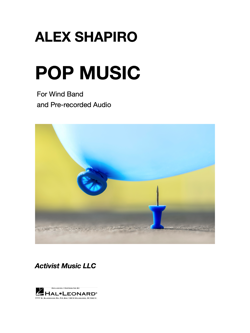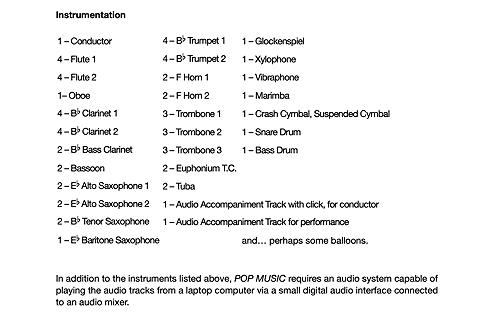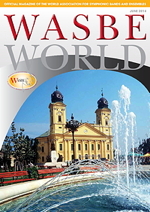POP MUSIC celebrates dedicated band students who were unable to do something they love—gather, rehearse, and perform—for an extended period due to precautions against the Coronavirus pandemic. A circus-like atmosphere often accompanies the seriousness of our times, and a little clown-like silliness and, uh, balloonacy…may be good for a much needed laugh after years of uncertainty in which the only constant has been the lack of constancy. As for the title? It's an ironic nod to all our unmet expectations. This piece is neither pop music, nor does a single balloon explode. At least, not intentionally!
|
|
PROGRAM BIO for Alex Shapiro 
|
|
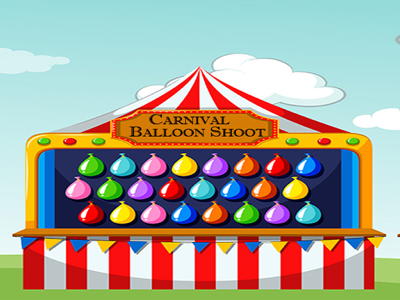
.pdf file of the TRANSPOSED CONDUCTOR SCORE,
9 x 12; 29 pages including cover and notes.
|
|

This demo of POP MUSIC will give you a decent idea of what it sounds like.
|
|
| |
CLICK THE PHOTO BELOW to watch the band members of Glenbard North High School become mimes during the opening of POP MUSIC, for its premiere performance May 12, 2022, with conductor (and circus ringmaster!) Lauren Whisnant.
|
|
It is vital that the audio track be played very prominently, and be set at least as loud as the band. Balloon sounds—some of them hilariously rude!—are the counterpoint to the musicians.
Please note: although nearly every important musical line is subtly doubled in the track to accommodate variables in personnel, POP MUSIC should not be performed without a piccolo, glockenspiel, vibraphone, and the rhythm section of cymbals, snare and bass drum. Every other part can be covered by other instruments. Bassoon, string bass, and marimba are ideal but optional.
Articulations, phrasings, dynamics, and timing (to leave holes for the "balloon snapping commentary") are crucial to the piece coming across effectively. The music is designed around contrasts in dynamics and articulations. Encourage the band members to over-emphasis the information they see on the page.
Staccato markings over 16th notes and over 8th notes indicate the intent of sharpness and brevity of the staccato. 16th notes without staccato markings indicate that the note should be played short, even if not pointedly. Every rest should be taken literally: for any instrument, it means a stopped sound. Notes and passages without slurs are to be tongued separately.
Balloons are optional; the piece is designed to sound fine without them. Or, they could be used as stage decoration. But there's no doubt that the performance will be... elevated (!) if each of the musicians has an inflated balloon at the ready!
As can be seen in the video above of the opening of the piece at its premiere, musicians can mime the act of inflating, deflating, and rubbing the balloons. If balloons will be "played", please heed the instruction for the musicians to rub them slowly and very quietly. They're doubling the same kinds of sounds that are in the audio track, which creates an immersive three-dimensional sonic experience for the audience. While miming at any time is just fine, no one should audibly play balloons between mm. 1-15, mm. 55-61, mm. and mm. 167-175: like a soloist with an inflated ego (!), the track audio should stand alone.
Balloons are also a big visual effect, so if they're used, it's important that everyone holds them very high up above their head! They present an opportunity for color coordination and choreography, and ensembles are encouraged to be as creative as they wish.
REHEARSAL SUGGESTIONS:
This music will stretch the students in interesting ways, as they experience a "pastiche piece" that like a bumper car at a carnival, frequently changes gear. Most of the piece is in 3/4, with just a short 4/4 section that should not be problematic. For less advanced players, attention should be paid to the tight bounce of the dotted rhythms.
In particular, musicians will need to practice the gradual tempo changes, and especially the big tutti accelerando at the end, the timing of which must be exact to make room for the final balloon sound that precedes everyone's final tutti note of exclamation.
It can't be stressed enough how vital it is to stay in sync with the click track. Like all comedy, the success of the humor in the music relies entirely on timing. Every balloon sound is carefully inserted in between musical events, and treated just like a percussion instrument, with the exact same rhythmic specifications.
Encourage the musicians to listen to the demo mp3 and play along with the practice track to be better prepared for the band room. The chromatic music of the 12-tone row that makes up the theme may at first seem foreign, but with time it will become familiar and even hummable—the ghosts of Nino Rota and Leroy Anderson are lurking here, somewhere!
|
|

For additional puzzle-solving and educational fun, below is a short analysis of the 12-tone row theme and the sectional structure of POP MUSIC.
POP MUSIC offers an opportunity to discuss 12-tone music and horizontal serialism, the film music that Italian composer Nino Rota composed for Fellini, the lighthearted works of Leroy Anderson (known for The Typewriter, among other novelty works), and Dance of the Sugar Plum Fairy from Tchaikovsky's Nutcracker Suite! Truly, a mixed bag of musical history, but a fun portal to take your students through.
THE TONE ROW: Bb C D E Gb Ab A B F G Db Eb:
|
|

m. 17: A theme (full row) 1st x, in piccolo, oboe, glockenspiel.
m. 28: A theme 2nd x: first 9 notes in oboe and clarinets.
m. 35: A theme 3rd x: first 5 notes in oboe, trumpet, glockenspiel.
m. 44: A theme 4th x: first 11 notes of the row in bass clarinet, trombones, and glockenspiel.
m. 60: B theme
m. 76: A theme 5th x: first 7 notes in trumpets.
m. 82: A theme extension
m. 86: C section
m. 105: A theme 6th x: full row in piccolo, flutes, oboe, glockenspiel.
m. 116: A theme 7th x: first 8 notes in piccolo, flutes, horn 2, glockenspiel.
m. 123: A theme 8th x: first 7 notes in oboe and trumpets.
m. 133: A theme 9th x: first 8 notes in bass clarinet, bari sax, double bass and glockenspiel.
m. 145: B theme 2nd x
m. 155: A theme ext., 2nd x
Here are the primary tonal center landings, or "bass anchors":
Bb at m. 14, E at m. 22, Ab at m. 26, C at m. 33.
Bb at m. 35, Ab at m. 42, A at m. 51, Bb at m. 53.
F at m. 60, Bb at m. 76, E at m. 86.
Bb at m. 105, E at m. 110, Ab at m. 114, C at m. 121.
Bb at m. 123, A at m. 139, C at m. 142.
F at m. 145, Ab ending.
|
|

Alex has written an extensive two-part article about electroacoustic band music and the uses of multimedia in the concert world. The essay, titled The e-Frontier: Music, Multimedia, Education, and Audiences in the Digital World echoes multimedia presentations she has given at The 2013 Midwest Clinic, the 2014 TMEA convention, and countless other seminars. It appears in the June and September 2014 issues of the magazine of the World Association for Symphonic Bands and Ensembles, WASBE World, and the .pdf is offered here with the very kind permission of the organization.
Click here for the full .pdf file  
|
|
|
Zoom, Skype, Google Meet, etc. are wonderful tools for affordably bringing Alex into your rehearsal, without having to book a plane flight! She has a great time coaching students, and the difference between their musicianship at the beginning of the session and by the time it ends, is remarkable.
Alex can tell the ensemble about how the piece was created and engage them in conversation, and even show them how her digital project studio works! It's also easy to arrange to have her say hello to the audience during a concert, via a custom video. Webhearsals connect musicians to the real person-- and the stories-- behind the notes on the music stands. Get in touch with Alex-- her contact info is at the bottom of this page.
To see some examples of webhearsals, and the view Alex loves to share from her desk, click here.
|
|
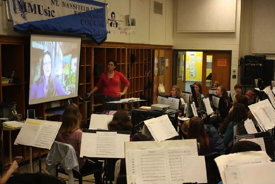
Alex was an early adopter of online "webhearsals"! Here's one from December 2012 with Alex in her studio
on Washington's San Juan Island, and band director
Mary Bauer and the Mt. Mansfield Union High School Band far across the continent in Vermont.
|
|
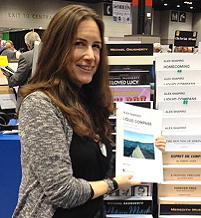 |
Alex loves writing for band! You can listen to any of her other pieces by clicking here 
|

The
VERY best way to reach Alex is
through email, by clicking here 
|

|
|

